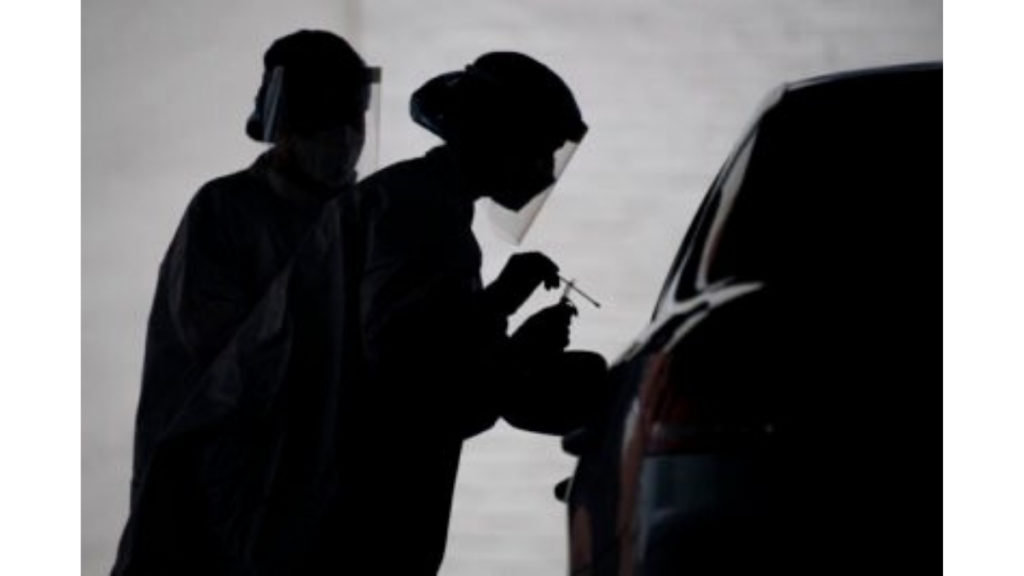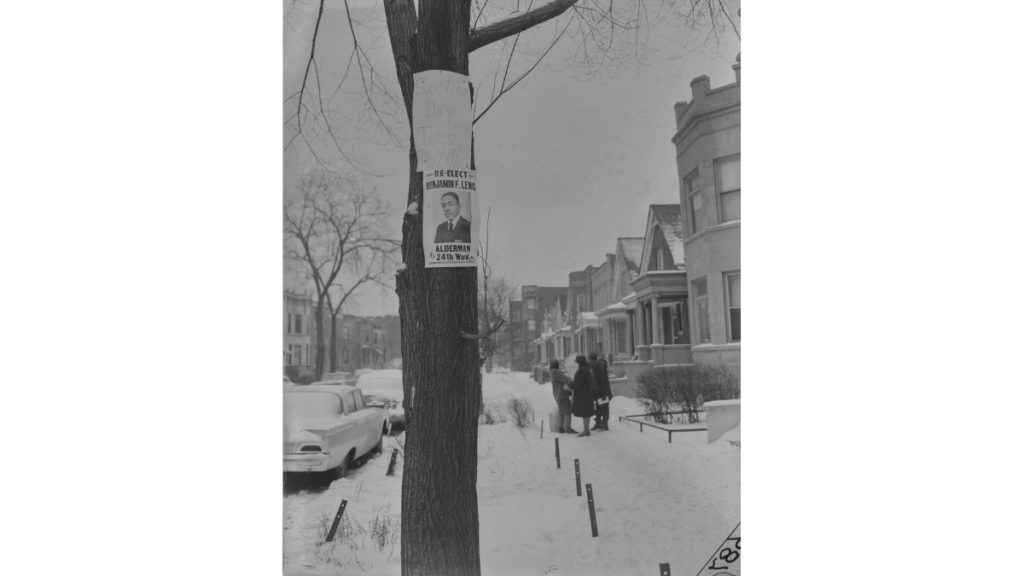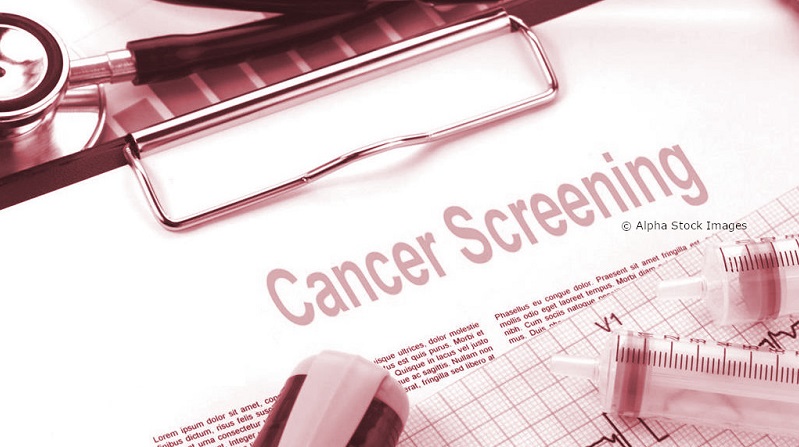A Tiny Number of People Will Be Hospitalized Despite Being Vaccinated. We Have to Learn Why.

![]()
Then he woke up on March 7 with aches and fatigue, feeling as though he might have a cold. When he started experiencing chest pain and finding it hard to breathe, he booked an appointment with his primary care physician, who sent him on to his cardiologist. Both thought that his symptoms must be related to his past heart issues. But Washington’s symptoms got worse. He was so tired he could barely get out of bed. His cardiologist reassured him that the fatigue was likely due to the irregular heartbeat he was experiencing, and that the medications prescribed for that would take a while to kick in. But on March 12, Washington’s son took him to the emergency room anyway. A test revealed Washington was positive for COVID-19.
Washington’s daughter, Tanya Washington, says that after her father was admitted to the Prisma Health Richland Hospital, she was determined to understand why. Why had Washington gotten sick despite being fully vaccinated? “Doctors said that because he was vaccinated, we think this may be a variant,” a strain of the coronavirus that could be more contagious or dangerous, Tanya recalls. She said they originally thought it might be a variant found in South Africa.
Working with an infectious diseases doctor at Prisma Health, Tanya helped to arrange for samples to be collected from her brother and the office secretary, who had also tested positive. The samples’ genomes were analyzed via a process known as sequencing. A week and a half after her father died, Tanya found out that he had been infected by B.1.427, a variant first identified in California.
Known as “breakthrough infections,” cases in which people test positive for COVID-19 after being fully vaccinated are extremely rare. Public health experts are anxious that these cases not be blown out of proportion and discourage people from getting vaccinated. Yet they also say it’s critical to track and study these cases, because scientists do not fully understand who is susceptible to vaccine failure. Furthermore, as the coronavirus continues to mutate, breakthrough cases may be the leading indicator of a new variant that is more resistant to a vaccine, which could necessitate manufacturers adapting their vaccines or developing booster shots.
In interviews with patients and through information requests to state health departments, ProPublica has found that the investigations recommended by experts, including analyzing the genome of the virus that infected the patient and collecting patient demographic information such as whether their immune system is compromised, are often not being done. Some states are tracking cases but are not reporting information about severity, such as whether patients were asymptomatic, were mildly ill or required hospitalization.
In many instances, patients’ samples are not sequenced to find out if a variant might have been involved; some labs are throwing out test samples before an analysis can be done; hospitals and clinics aren’t always collecting new samples to analyze them. That means that for so many people, nobody will ever know if a variant was involved, leaving public health officials without data to be able to examine the extent to which variants are contributing to breakthrough cases.
“It’s alarming that we can’t sequence more of the virus than we’re able to now — that’s something we need to resolve,” said Brian Castrucci, chief executive officer at the
de Beaumont Foundation, a health philanthropy. “The more we know, the better we can react. We want to know the information so that we can make the right policy and health decisions.”
We Need to Learn What Causes Breakthrough Cases. Many Health Departments Aren’t Gathering Enough Data.
A breakthrough infection is defined as a positive COVID-19 test taken more than two weeks after finishing a vaccine course. Such cases are very infrequent, thanks to the astonishing effectiveness of the available coronavirus vaccines. Instances like Washington’s, in which someone requires hospitalization or dies, are even more rare.
As of April 12, South Carolina’s health department said it had identified 155 cases of breakthrough infection, which is less than 0.02% of about 950,500 people in the state who have completed their vaccination course. That’s a similar rate to that reported in Washington state, where, as of March 30, 102 breakthrough cases were reported out of more than 1 million fully vaccinated people. Eight people, or 0.0008% of those fully vaccinated, were hospitalized. Oregon’s experience is also similar, with about 0.02% of 700,000 fully vaccinated Oregonians experiencing breakthrough infections so far. Three out of those 168 people died.
However rare, these cases are important to investigate, experts say. “We want to make sure we’re not missing them. We also want to know where they’re happening, so there’s a geographic surveillance element. We want to look to see if there’s a pattern going on or if it’s a one-off,” said Dr. Mary Marovich, director of the vaccine research program at the National Institute of Allergy and Infectious Diseases’ AIDS division. If a cluster of cases all came from the same geographic area, that could indicate a variant on the rise, or perhaps a problematic batch of vaccines.
While the vaccines so far have shown effectiveness against all known variants, Dr. William Gruber, senior vice president of Pfizer’s vaccine clinical research and development, says scientists have to stay proactive in case new variants render the vaccines less effective: “I’m not a Pollyanna — there is potential for escape to occur,” he said, referring to the concept of the virus “escaping” the protection provided by a vaccine.
Some states have only gathered patchy information on the severity of their breakthrough cases. If all breakthrough infections were mild or asymptomatic, that would indicate that the vaccines are consistently preventing people from needing hospitalization — which is what scientists expect and hope the shots will do. Without knowing when people get sick enough to be hospitalized, public health officials can’t dig deeper to find out why the vaccines didn’t do what they were supposed to.
“The sentinel event that we have to be on the lookout for is when these breakthrough infections result in severe COVID-19, like a hospitalization or death, because that’s what a vaccine is supposed to protect against,” said Denis Nash, professor of epidemiology at the City University of New York’s Graduate School of Public Health & Health Policy.
In Michigan, where 246 cases of breakthrough infection have been identified as of March 31, records for about half of those cases did not have any information about whether or not the patient was hospitalized, health department spokesperson Lynn Sutfin
told the Detroit News. New Jersey’s health department said it is tracking breakthrough infections but couldn’t say how many have occurred so far or whether anyone has been hospitalized.
In many cases, sequencing to identify variants is not being done for a number of logistical reasons. Getting samples to sequence is difficult, said New Jersey health department spokesperson Donna Leusner. “Commercial labs do most of the PCR testing and commercial labs typically only keep samples for a couple of days before discarding. Thus by the time we are aware of the positive case, the sample was likely already discarded.” She added that the health department can’t say right now if breakthrough cases are more likely to be caused by variants because they don’t have a big enough data set.
In neighboring New York, the state’s public lab, Wadsworth Center, has received samples for fewer than 20 vaccine breakthrough cases that are of a good enough quality for sequence analysis, according to spokesperson Jill Montag. Samples need to be correctly stored — preferably frozen instead of refrigerated — and capture enough virus for analysis to be successful, said Kelly Wroblewski, director of infectious disease at the Association of Public Health Laboratories. Montag wouldn’t say how many total cases of breakthrough infection have been found. So far, only about half the samples have been sequenced. “None have been a variant of interest,” she said.
In Washington, only about 30 of the 102 breakthrough cases had samples available to be sent for genotyping, according to Dr. Scott Lindquist, acting health officer. South Carolina also has only sent about 45 samples for sequencing out of its 155 breakthrough cases, according to the health department. “Analysis of data for vaccine breakthrough cases is ongoing,” said a spokesperson. “At this time, however, no specific trends have been identified.”
One obstacle to gathering data is the type of test used to test patients for COVID-19. Samples from so-called “rapid” tests, which measure proteins produced in response to an infection, are typically thrown out immediately, and many clinics that perform such tests don’t have the storage capacity to keep the swabs, said Wroblewski. Only a sample gathered for the more expensive PCR test, which needs to be sent to a lab with the capability to scan for RNA from the coronavirus, has the potential for such analysis. That means 23-year-old Breana Landon, who works as an insurance coordinator at a health clinic in South Jordan, Utah, will never know for sure if a variant was the reason she managed to get COVID-19 — for the second time — after she received both doses of her vaccine. Landon got her second dose of the Moderna vaccine on Feb. 3. Nearly two months later, on March 29, she woke up with fatigue, body aches and vomiting. “I thought it was the flu, because I hadn’t had the flu shot but I had my COVID vaccine,” Landon said. She had a rapid coronavirus test done at her workplace and was shocked to discover that she had tested positive.
“The health department called and said they think it’s more than likely another variant — they think it’s the U.K. variant because it’s very prominent in the area,” Landon said. But there was no way for her to know for sure because she never had a PCR test done, nor did the health department follow up to get another sample.
Utah’s health department has tracked 143 breakthrough infection cases to date, of which seven required hospitalization, according to spokesperson Jenny Johnson. So far, only three have been sequenced, and all were B.1.429, another variant first detected in California, she said in an email. Eighty cases couldn’t be sequenced due to either a bad sample or no sample, and 60 more are “pending sequencing,” she said. In a case like Landon’s, Utah’s health department “may encourage a patient to get a PCR,” but “it would be up to the patient to decide if they wanted to get a PCR test at a provider of their choice, which then could be potentially sequenced,” Johnson added.
Nash, from the CUNY’s public health school, said it’s not always possible to go back to a patient to get a new sample — even patients who remain hospitalized may no longer be shedding enough virus after a while. He suggested having every hospital bank a sample from each of its patients for a few days so the health department can catch up when it realizes a breakthrough case has occurred.
“None of these investigations are cheap or easy,” said Tara Smith, professor of epidemiology at Kent State University College of Public Health. Ideally, the Centers for Disease Control and Prevention would streamline the process of collecting and sequencing samples from breakthrough cases to see whether variants are at play. They would “have protocols and permissions in place … and have funding behind it all, too.” Smith said that ideally the CDC would sign contracts with big commercial labs and lay out steps for how health providers should obtain and transport samples to those labs, “so there’s something uniform and each jurisdiction doesn’t have to re-create the process.”
The CDC “is studying reports of COVID-19 that occur after vaccination to better understand the reasons these cases occurred,” said agency spokesperson Kristen Nordlund. “Currently, there is no evidence that COVID-19 after vaccination is occurring because of changes in the virus.” The CDC would not release a count of the number of breakthrough cases it was aware of or say how often sequencing information is available for those cases.
Landon says the vaccine might have helped her have a milder case this time around. In her first bout of COVID-19 in October, she developed pneumonia and needed to take an antibiotic. This time, she doesn’t have pneumonia, but has been prescribed an anti-nausea medication.
Still, she says she feels “very discouraged, because I feel like I’m doing everything I can. All of us front-line workers are fighting so much, and to be sick again is just such a hit in the face.”
There’s a Difference Between Medical Trials and the “Real World”
We shouldn’t be surprised by breakthrough infections or even the occasional severe case, according to Marovich, from the National Institute of Allergy and Infectious Diseases.While the vaccine trial results have been touted for having zero deaths and zero or only one hospitalization among vaccine recipients, that doesn’t mean that they are 100% guaranteed to make people hospitalization-proof. (Granted, the numbers reported at the state level so far suggest that the rate of effectiveness against hospitalization could be rounded up to 100%, but most people who hear “100%” think it’s absolute.)
“Clinical trials are idealized conditions,” Marovich said. “When you get out into the ‘real world,’ things are not ideal.” For example, Pfizer and Moderna both excluded people who were taking systemic immunosuppressants or who were in an immunodeficient state. “Someone could have an immune deficiency that makes them a nonresponder, they may be medically frail and just cannot mount enough of a response to the virus,” Marovich explained. “When you give the vaccine to millions and millions of people, when that denominator increases, you will see cases.”
The key, to her, is that the rate of breakthrough infections not exceed what was seen in the vaccine trials, which so far hasn’t happened.
Pfizer’s Gruber said the company is scrutinizing breakthrough infections in trial participants and sequencing not only vaccine recipients but also a subset of placebo recipients who get sick so it can understand the likelihood of being exposed to a variant versus the regular coronavirus.Some of the variants — such as B.1.1.7, which was first identified in the United Kingdom, B.1.351, first identified in South Africa, and P.1, first identified in Brazil — are concerning because their genetic changes are thought to make them more contagious and potentially able to cause more severe disease. A report by the European Centre for Disease Prevention and Control noted several media reports of outbreaks in long-term care facilities that included breakthrough infections among fully vaccinated residents and staff were often linked to emerging variants of concern, “but the majority of cases among vaccinated residents have been mild or asymptomatic, with only a minority of cases requiring hospitalisation.”
Gruber says he’s been encouraged by the real-world data he’s seen so far. Data gathered in Israel, where B.1.1.7 is the dominant strain, found that Pfizer’s vaccine was at least 97% effective against symptomatic COVID-19, hospitalizations and deaths.
“We’re gratified” by this data, Gruber said, “but we’re not sitting idle hoping for the best, we are preparing in case there is a breakthrough.”
Data on the vaccine’s effectiveness against B.1.351 has been mixed. In Pfizer’s study of the vaccine’s efficacy against this variant, conducted in 800 participants in South Africa, nine people who received the placebo became sick with COVID-19, while none of the vaccine recipients got sick. But a small study from Israel, posted online on April 9, found that among almost 400 people who tested positive for COVID-19 after being fully vaccinated, B.1.351 was eight times more prevalent than it was among a similar cohort of unvaccinated patients who got sick, suggesting that the vaccine may be less effective against that variant.
Pfizer is developing a booster vaccine to target B.1.351, Gruber said, “not so much because we think the South Africa variant is going to be a problem but because it gives us experience in how fast we can come up with a new vaccine.” The company is also studying the efficacy of its vaccine against the P.1 variant via its trial sites in Brazil, he added. Moderna did not respond to a request for information about how it is tracking and studying breakthrough cases.
Another reason to study breakthrough cases is that they may affect guidance for specific subgroups of the population who might be more at risk for vaccine failure. Numerous academic groups are rushing to study the vaccines’ potency in immunocompromised people. Early data suggests that some medications may suppress the immune system so much that some individuals cannot make any antibodies, even after being vaccinated.
One ICU doctor in Long Island, who asked not to be identified because he wasn’t authorized to speak on behalf of his hospital, said that when he’s seen breakthrough infections in people with well-functioning immune systems, they tend to be very mild, with “cold-like” symptoms. But he’s seen two blood cancer patients who tested positive after receiving both doses of the vaccine and needed to be hospitalized.
“We checked them for antibodies and when they came in, they were negative — it’s just not taking for them,” the doctor said. A health care worker near Minneapolis said a 52-year-old patient who had leukemia was hospitalized for nearly a month after he got sick, despite being fully vaccinated. Fortunately, the patient recovered and was discharged.
Research is beginning to suggest that differences in immune response may be due to the type of medication a patient is on, said Dr. Alfred Kim, assistant professor of medicine at the Washington University School of Medicine and co-director of the university’s Lupus Clinic. Kim’s study of rheumatology patients has found that the drug rituximab and some steroids make them particularly vulnerable, while other classes of drugs, including TNF inhibitors, JAK inhibitors and anti-metabolites don’t seem to prevent patients from producing an immune response to the COVID-19 vaccine.
Rituximab is also used as a treatment for blood cancer. The Long Island doctor stressed that even patients who finished rituximab treatment months ago should be aware that their bodies may not respond to the COVID-19 vaccine. “Even if they got it seven, eight months ago, it’s a very effective drug for some kinds of leukemia or lymphoma, but the effects can persist for years afterwards.”
Dr. Dorry Segev, professor of surgery and epidemiology at Johns Hopkins University, is studying the vaccines’ performance in patients who have received organ transplants and need to take immunosuppressing medications for the rest of their lives to keep their bodies from rejecting the donated organ. While the vaccines appear to be safe in that population, it may not actually work in some of those patients.
“There are CDC guidelines that say you can go out and do things. What really scared me is if we tell that to people who are on immunosuppressing drugs and they think they have immunity, ‘Go out and do things,’ and realize too late that they’re not immune by actually getting the virus,” said Segev. Segev and his team have already published a study showing that after one shot, only 17% out of 436 transplant patients created any antibody response. “That’s a stark contrast to 100% of immunocompetent people who have antibody responses to dose one,” he said.
The team is preparing to publish the follow-up study that examines antibody levels after the second vaccine. “It looks like about half of the patients will have some antibody response,” he said. “That still leaves us with half who have nothing, and we’re trying to figure out what to do for them, whether the best practice would be to get a third dose of the same vaccine.”
Segev is calling on the CDC to make clear in its guidelines for immunocompromised patients that even after being fully vaccinated, it’s not safe to drop precautions. “Hopefully they’ll put out something clear in lay terms to say, ‘Do not assume vaccination is immunity if you have a compromised immune system,’” he said.
The CDC didn’t respond to questions about its guidance and whether it has any caveats to its recommendations for subsets of vaccinated populations. Currently, the only note about immunocompromised individuals in the agency’s guidelines is a suggestion that people “should discuss with their provider if they have any questions about their individual situation, such as immunocompromising conditions or other concerns.”
Communication about what the vaccine allows each individual to do must focus on the experience of the 99%, said Castrucci, of the de Beaumont Foundation. “You simply cannot manage to the rarity,” he said. “If the messaging is, ‘If you’re vaccinated, you have to stay home and you still can’t leave,’ how many people are going to get the vaccine?”
In fact, it’s critical to explain to the public that it’s even more important for everyone to get vaccinated because the vaccines don’t make every single person hospitalization-proof, said Pfizer’s Gruber.
“People tend to forget the importance they have as a citizen to protect the most vulnerable,” he said. So until case counts are significantly lowered, it’s important to continue to wear a mask among crowds and keep gatherings small: “Think of it like a belt and suspenders.” Joan Towers is a transplant recipient taking two medications that suppress her immune system. Towers enrolled in the Johns Hopkins study, hoping that the vaccines would help her be able to end her yearlong isolation. “People like me are extremely vulnerable, but we don’t want to live in a bubble for the rest of our lives, especially when we’ve been given the gift of life,” she said. On the day she got her second vaccination, “there was such a feeling of relief, it was almost like a celebration,” she said. But then came the blow — the Hopkins study revealed that she doesn’t have any detectable levels of antibodies, even after the second shot.
Vanessa Lamers, Towers’ daughter, said she’s anxious for as many people as possible to get vaccinated so that her mother will be protected by her community.
“We now know that the mRNA vaccines are helpful in preventing spread and infection,” said Lamers, who works at a public health nonprofit. “So I’m going to have to be that solid brick wall of antibodies for my mom and protect her.”
We Just Need More Answers
As time goes on, these case investigations could become more important. “We don’t know how long the vaccines are going to work beyond 6 months, so maybe if we can’t keep people up to date with boosters, we might see these cases happen more commonly even when regular strains are in circulation,” said Nash, from CUNY. “We know that they’re very rare now, but the challenge is, things can change,” Nash added. “As we know, things keep changing with COVID, so it could be different in a few months. We can’t back off from surveillance.”In the meantime, much still remains to be understood about some of the breakthrough cases that have already occurred.
Carey Washington was not considered immunocompromised. It’s unclear if his age meant that his immune system may have been more fragile.
“I think this is a lost opportunity if we don’t more aggressively sequence patients,” said Kim, of Washington University. “But at this stage in the game, most state health departments are resource-constrained and their workers have a substantial amount of fatigue. It’s not an excuse, but I do understand that the circumstances of the pandemic have led to suboptimal choices.”
To Tanya Washington, however, it seems more needs to be done.
Tanya said she is a “huge proponent” of vaccines, and she has helped at least 15 people in her community get appointments for their shots. She still thinks vaccines are good, but wants people to understand that they’re not 100% effective. She’s worried that the vaccine may not work as well against the variant that infected her dad and wants the variants’ interactions with vaccines to be more carefully studied, she said. She also wants to remind people to keep wearing masks and distancing even after getting vaccinated. “I don’t want my dad’s death to have been in vain.”
“I’ve seen so many people on Facebook saying, ‘We’re fully vaccinated, now we can get back to normal!’” she said. “To me, I’ll never feel normal again, losing my dad like this.”
Maya Miller contributed reporting.
A Tiny Number of People Will Be Hospitalized Despite Being Vaccinated. We Have to Learn Why.






Responses